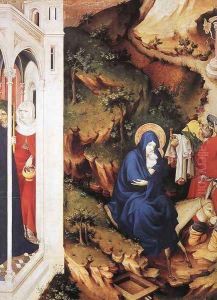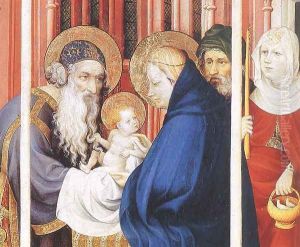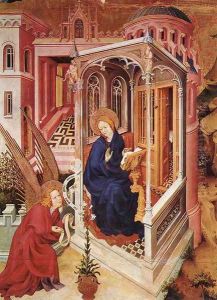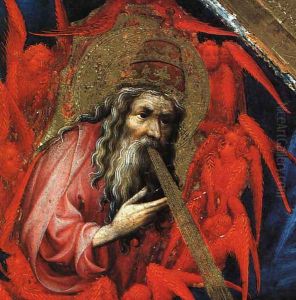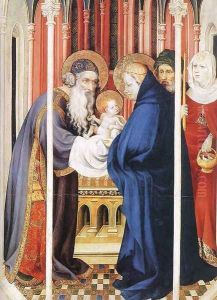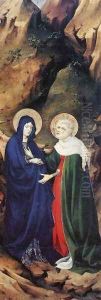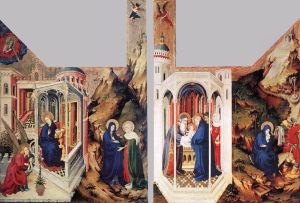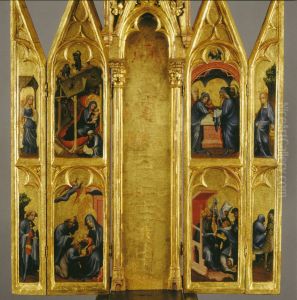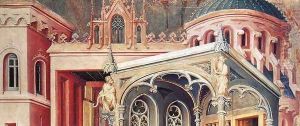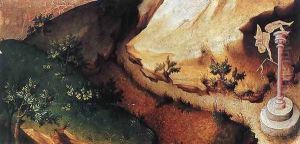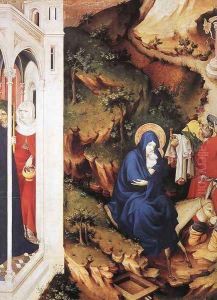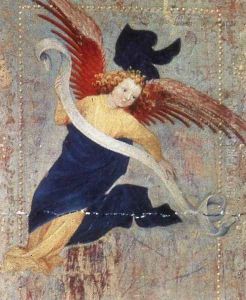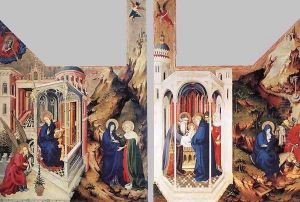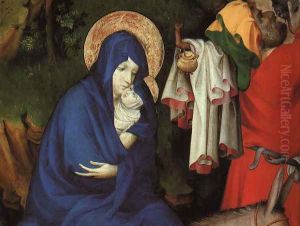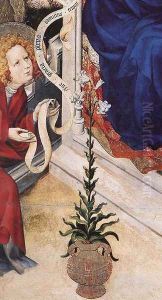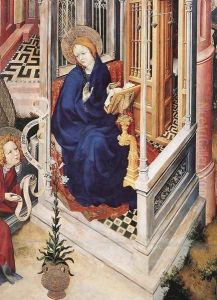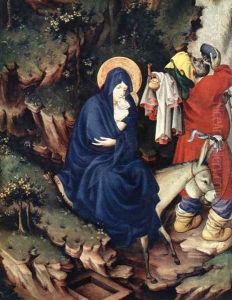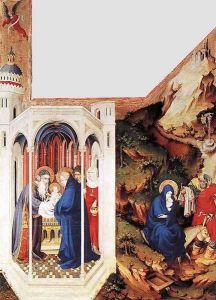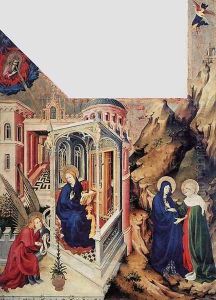Melchior Broederlam Paintings
Melchior Broederlam was an Early Netherlandish painter who is known for his significant contribution to the development of Northern European painting. Little is known about his early life, but he is first recorded as a master painter in Ypres, Belgium, in 1381. He later became attached to the Burgundian court where he worked for Duke Philip the Bold. Broederlam is best known for his work on the Dijon Altarpiece, completed between 1393 and 1399 for the Carthusian monastery at Champmol, which was founded by the Duke.
The Dijon Altarpiece consists of two wings that were designed to close over an elaborate sculpted shrine created by Claus Sluter, another prominent artist of the time. Broederlam's contribution to the altarpiece includes a series of panels depicting scenes from the Annunciation to the Visitation, and from the Presentation in the Temple to the Flight into Egypt. His work is characterized by a meticulous attention to detail and a keen observation of nature, which was groundbreaking at the time and heralded the increasing naturalism that would develop in Northern Renaissance art.
Broederlam's innovative use of space and his ability to convey the texture of different materials greatly influenced subsequent generations of painters. He was one of the first artists north of the Alps to experiment with the effects of light and shadow, which can be seen in the realistic draping of the garments and the spatial depth he achieved in his compositions. Despite the fact that few works by Broederlam have survived, his style and techniques had a lasting impact on the artists of the Burgundian Netherlands.
After completing the Dijon Altarpiece, there are few records of Broederlam's activities. His exact date of death is unknown, but he is believed to have died around 1411. The scarcity of surviving works and documentation makes Broederlam a somewhat enigmatic figure in art history, but his existing works continue to be studied for their artistry and historical significance, as they mark an important transition in European painting.
